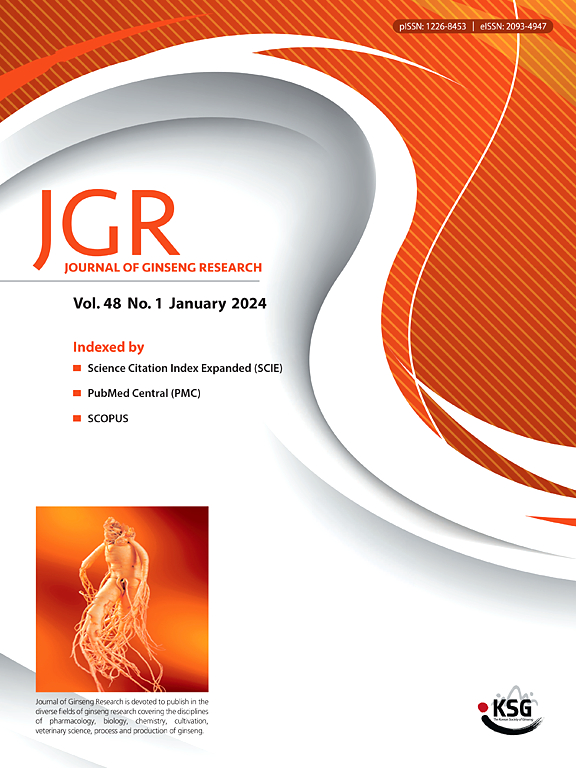The clearing-up of misunderstanding on body temperature changes and heat responses after Panax ginseng or Panax quinquefolium intake
IF 5.6
2区 医学
Q1 CHEMISTRY, MEDICINAL
引用次数: 0
Abstract
The roots of Panax ginseng, known as Korean ginseng, have been widely used worldwide for treating many diseases and general health maintenance. Korean ginseng is perceived as safe owing to its natural origin, extensive historical uses, and accumulated scientific clinical studies in humans. According to oriental medicine theory, Panax ginseng is categorized as having warm properties, while Panax quinquefolium, called American ginseng, is classified as having cool properties. Based on this, it is said that Panax ginseng might cause an elevation of body temperature, such as sensations of warmth or heat, whereas Panax quinquefolium provides cooling effects. However, scientific evidence for comparing these parallel thermogenic effects of two species is scarce. This focused review summarizes clinical trials and animal studies regarding the heat responses of two Panax species. This review aims to provide an overview of current scientific data on the thermogenic effects inducing a heat sensation and a hot feeling of Korean ginseng and American ginseng.

解惑人参或西洋参摄食后体温变化及热反应之误区
人参的根,被称为高丽人参,在世界范围内被广泛用于治疗许多疾病和一般保健。高丽人参被认为是安全的,因为它的天然来源,广泛的历史用途,以及在人类身上积累的科学临床研究。根据东方医学理论,人参被归类为具有温暖性,而西洋参被归类为具有凉爽性。基于此,据说人参可能会引起体温升高,例如温暖或热的感觉,而西洋参则具有冷却作用。然而,比较这两个物种的平行产热效应的科学证据很少。本文综述了两种人参热反应的临床试验和动物研究。本文综述了目前有关高丽人参和西洋参的热感和热感产热效应的研究进展。
本文章由计算机程序翻译,如有差异,请以英文原文为准。
求助全文
约1分钟内获得全文
求助全文
来源期刊

Journal of Ginseng Research
CHEMISTRY, MEDICINAL-INTEGRATIVE & COMPLEMENTARY MEDICINE
CiteScore
11.40
自引率
9.50%
发文量
111
审稿时长
6-12 weeks
期刊介绍:
Journal of Ginseng Research (JGR) is an official, open access journal of the Korean Society of Ginseng and is the only international journal publishing scholarly reports on ginseng research in the world. The journal is a bimonthly peer-reviewed publication featuring high-quality studies related to basic, pre-clinical, and clinical researches on ginseng to reflect recent progresses in ginseng research.
JGR publishes papers, either experimental or theoretical, that advance our understanding of ginseng science, including plant sciences, biology, chemistry, pharmacology, toxicology, pharmacokinetics, veterinary medicine, biochemistry, manufacture, and clinical study of ginseng since 1976. It also includes the new paradigm of integrative research, covering alternative medicinal approaches. Article types considered for publication include review articles, original research articles, and brief reports.
JGR helps researchers to understand mechanisms for traditional efficacy of ginseng and to put their clinical evidence together. It provides balanced information on basic science and clinical applications to researchers, manufacturers, practitioners, teachers, scholars, and medical doctors.
 求助内容:
求助内容: 应助结果提醒方式:
应助结果提醒方式:


